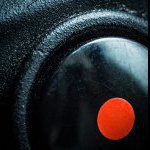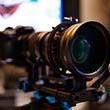Leaderboard
Popular Content
Showing content with the highest reputation on 10/29/2013 in all areas
-
I also attended Photoplus Expo. There were no SD cards allowed, but I sneaked it into an A7R and recorded AVCHD video. You can view and download the AVCHD files from Vimeo: A7R w Canon 24-70mm F2.8L Metabones EF to E-Mount Adapter https://vimeo.com/78036080 A7R w Zeiss 55mm F1.8 E-Mount https://vimeo.com/780360813 points
-

Are anamorphic's days numbered?
Paulio and 2 others reacted to Andrew Reid for a topic
There's a lot you're missing, yes. The whole image is different to a normal lens. The flare is the tip of the iceberg... And actually, no you can't do it in post. It will look shit. The aspect ratio is not the main thing either. The way it is achieved is far superior to cropping. You get a wider lens horizontally. With a normal lens, you need to get further away from your actor's head, to allow for the crop of the top and bottom. By coming further out, you lose the intimacy and the depth compression of the shot changes. By having a lens that is wider horizontally, you also get more leeway to track a moving body sideways. If you imagine a close up of a face filling the screen in a 4:3 box from top to bottom, you'd have no room at the edges... no safety margin in your pan when the person moves. With anamorphic your pans are more graceful and considered, and you are not 'chasing' the moving actor around - yet still have a close up from top to bottom. You see what I mean? Then there's the bokeh. We're not just talking oval light points. The whole out of focus parts have a different look. Something much more sublime and cinematic, less obvious. Foreground objects and background objects, anything which isn't directly in focus, you can tell there's anamorphic magic at play there. The resolution gain is very real too. If you take a 1920 x 1080 image and crop it, you end up with something like 1920 x 720. Effectively 720p vertically. Not good. With an anamorphic you maintain 1080p, and can stretch or upscale the horizontal pixel count to 2.5K. And an anamorphic lens is the only way to make use of 1280p on the 5D Mark III with raw video without the dopy 3:2 aspect ratio making it look shit. There's a reason top flight productions still spend $$$ renting anamorphic lenses and a reason the Arri Alexa Studio (with 4:3 mode) exists. That should tell you something about the advantages of real anamorphic shoots. Django Unchained - also anamorphic. As for the "everyone's screens are 16:9" argument... so what? For me the wider aspect ratio has nothing to do with historic cinema screen standards or current TV standards. Cinema is wider, because it's more artistic and more immersive and better looking that way. That's really the crux of the argument. Anamorphic is just BETTER.3 points -
you are not taking into consideration the effect they have on the overall picture in general. resolution gain is null and void since sensors nowadays dont suffer from any crop. the main thing these lenses impart is the feeling of proper cinema. shooting anamorphic has always been a more complicated affair, requiring greater technical skills, more time and effort, production design not to mention 4 perfs instead of 3 adding up film costs by 25%, and budget to afford such requirements. The look of anamorphic is now etched into the minds of anyone who enjoys proper cinema, done properly. Take Leon (The Professional) for example. - if it were shot nowadays by typical film makers they'd have said there are too many scenes in confined spaces, too many close up's, etc. They'd say the aspect ratio is not justified, and that the resolution gain is null and void. And this is exactly why we see less and less films made that are of the caliber of Leon. They go for the quick and easy option. The reason people shoot anamorphic is because it allows them the aesthetic edge over the guys who don't see the difference. It's not that oval bokeh and horizontal streaks look better than round bokeh and typical lens flare, - its that the subtle difference is very effective in imparting a feel of true cinema, and the scale of a true cinema budget. even if you cropped the edges off a 2.35:1 movie and showed it in 16:9 or 1.85/1, the subtle bokeh alone will add the look of a film that cost 25% more money to pay for the skills, and production to enable them to shoot in that way. Are there any flares in Braveheart? nope. its not the flares, its the association the lens character from anamorphic has with real cinematic efforts like Braveheart.3 points
-

Full frame kaleidoscopic video with the Sony RX1
Kingswell and one other reacted to Andrew Reid for a topic
http://vimeo.com/77825876 The Sony RX1 has amazing stills but awful video! I began thinking how could I use this otherwise great little camera for video? The answer is to rough up the image beyond comprehension, with trick filters. Here's how I did it. Read the full article here2 points -
The REAL difference between normal DSLR video and 5D Mark III raw video
Lucian and one other reacted to Kays Alatrakchi for a topic
A few thoughts: At the end of last year I purchased a 5D3 (refurb, end of the year sale...screaming deal). My reasons were that I wanted a full frame camera for both video and stills, and ideally one which was at the cusp of gaining some quality improvements due to Canon's announced 1.2.1 firmware update with "uncompressed HDMI out." When the firmware arrived, and after reading up some enlightening posts, I was almost ready to sell the camera. When Blackmagic announced their new BMCC 4K and the Pocket cameras I was planning on putting the 5D on eBay asap. Then a small miracle happened, word spread quickly that ML was on the cusp of something big. I stuck it out, read anxiously as those early reports indicated that capturing RAW data was a real possibility, and eventually took a leap of faith and installed ML on the 5D3 and put in my order for a couple of Komputerbay 64gb 1000X cards. I haven't looked back since, the improvement in quality has been stunning to say the least. I have completely rethought my purchase and I now think it's one of the best decisions I have made. This has been strengthened by the delays in the BMPCC shipping, and some of the issues plaguing their Pocket camera. Further, I have been able to record at 1920X1288 resolution without any issues, this is a good format for anamorphic shooting, or subtle re-framing in post. Having said that, there are a few caveats which might or might not be deal breakers for some: 1. As of yet, no audio. This might or might not come back at some point. 2. Playback is a bitch. Currently in-camera playback is limited to a low frame rate b/w image, not something you want to show to your client for on-set approval. 3. External monitoring is kinda buggy, it definitely has issues but it's useable for basic needs. 4. Post production is a bit more involved, and the footage does take up a lot more space than h.264. 5. While I wouldn't call the learning curve steep, there is a lot to wrap your noggin around at first. 6. There are some issues with some CF cards, particularly Komputerbay. Order 3-4 and be prepared to send a couple back. If that doesn't scare you, and you own a 5D3 (or even a 5D2), then you should jump in because the quality upgrade is definitely worth it. BTW, I made a short video that shows the differences between footage captured with the 5D3 Raw, the Alexa and the BMCC as how the intercut together in post, you can watch it here if you want:2 points -

Magic Lantern - RAW and Anamorphic
Julian reacted to QuickHitRecord for a topic
I just did a test recording and can confirm that I am able to record continuously on the 5D Mark III at 1280x960 (4:3) for 20:41 on a Lexar 64GB 1000x card.1 point -

Full frame kaleidoscopic video with the Sony RX1
Andrew Reid reacted to prismschism for a topic
these psychedelic vibes make for a whole new angle to tell a story ! I personally view this similarly to recording a musician - tasteful distortion (or perhaps a chorus effect in this case?) is yet another flavor to the finish.. However, one shouldn't oversaturate things - an hour of this footage would surely cause dizziness! and as such, the content before the filter is the main anchor of the visual. @26 @1:46 & @2:16,17 would certainly make a nice scene for a dreamy daze following a stimulant-fueled night's aftermath (Ã la Black Swan). Technology & technique are why I choose to read this blog - keep it up !1 point -
Let me recommend a book I think every film-maker should read http://www.amazon.com/Sculpting-Time-Tarkovsky-Filmaker-Discusses/dp/0292776241 In my 20s my girlfriend took me to her favorite film, The Sacrifice. I have never sat through a longer, more boring, 2 hours in my life! When I later read that they forgot to load film into the camera before shooting the burning house, and had to shoot another burning house, i was not in the last surprised. I made a mental note that Tarkovsky is the WORST filmmaker ever. Then I read the book and watched some of his other films. What I love about this site is that it talks about film-making technology in a serious way. People who think it's about one camera vs another are COMPLETELY missing the point. The questions trying to be answered is "what is the best technological approach, and trade-off, I should take for what I want to shoot." Let me finish my rant with this. At the Dartmouth Film Society they showed "Black Narcissus". There are so few real film-theaters around I was very excited. I wished my oldest kids were around to take them. Anyway, I went by myself and watched it. It didn't look good at all. I thought, "I guess digital technology has advanced so far Technicolor now looks like crap." I had remembered seeing the film in NYC and being blown away with it's cinematography. Afterwards, I asked what they showed it on. The young woman (student) says, "DVD, we wanted to show it in film, but the projector was broken. And then our Bluray wasn't working. Fortunately, we had a DVD too." I was floored. It wasn't that a film-society showed one of the greatest Technicolor masterpieces in DVD, it was that they did not tell the audience. People went away not having experienced the technology/story as it was meant to be shown. That's the way I feel reading many of those off-posts. Many readers don't know the beauty of real film because it has been swamped by digital content. Eventually, everyone learns their mistakes, just like I did about Tarkovsky and the real goal of filmmaking. Many posters here that go off-topic will one day get it. Now, to get back on this topic, what are the best films that use the most minimal of technology. I'd love to see a best 10 lists. I'll start with Fast Runner.1 point
-

iPhone 5S (120fps)
Cosimo murgolo reacted to Ergo Zjeci for a topic
http://vimeo.com/77890312 Edited in iMovie (phone app) and shoot with iPhone 5S1 point -
Indeed, but as Andrew said, like with the D800, they can tell you all they want that it's clean 4:2:2 10 bits from the HDMI, but if it's just 4:2:0 8bits, "rewrapped" in a 4:2:2 10 bits signal, it doesn't matter, it's just the same "crappy" signal in a beautiful box ;) but they get to tell you that it's great, cause they're not actually lying...1 point



